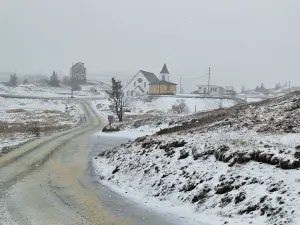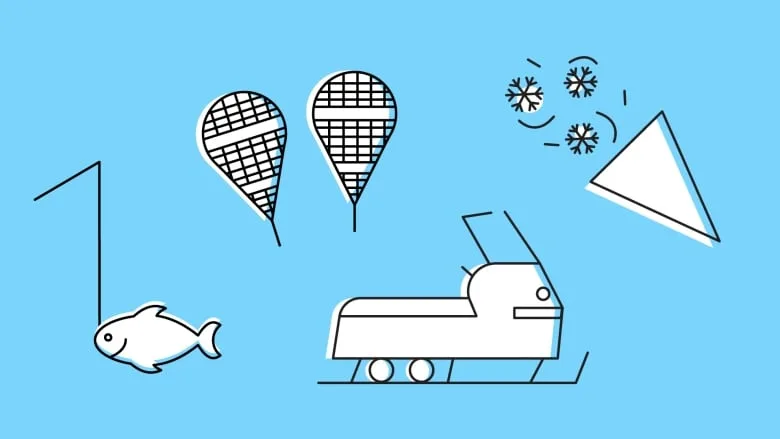
How much COVID-19 risk is there in these common winter activities?
As Saskatchewan's winter continues, you may be wondering if it's safe to partake in some classic seasonal activities during the pandemic. So which activities put you at a higher risk of contracting the virus?
We asked Dr. Anne Huang, a former deputy medical health officer.
She said it's important to stay outside and avoid the three Cs: closed spaces, close contact and crowds.
"Some of these winter activities, on the surface things could be totally low risk, but the process of doing some of the activity … has led to transmission," Huang said.
"It's important for people to realize there's still lots of things that could be done safely."
LOW-RISK ACTIVITIES
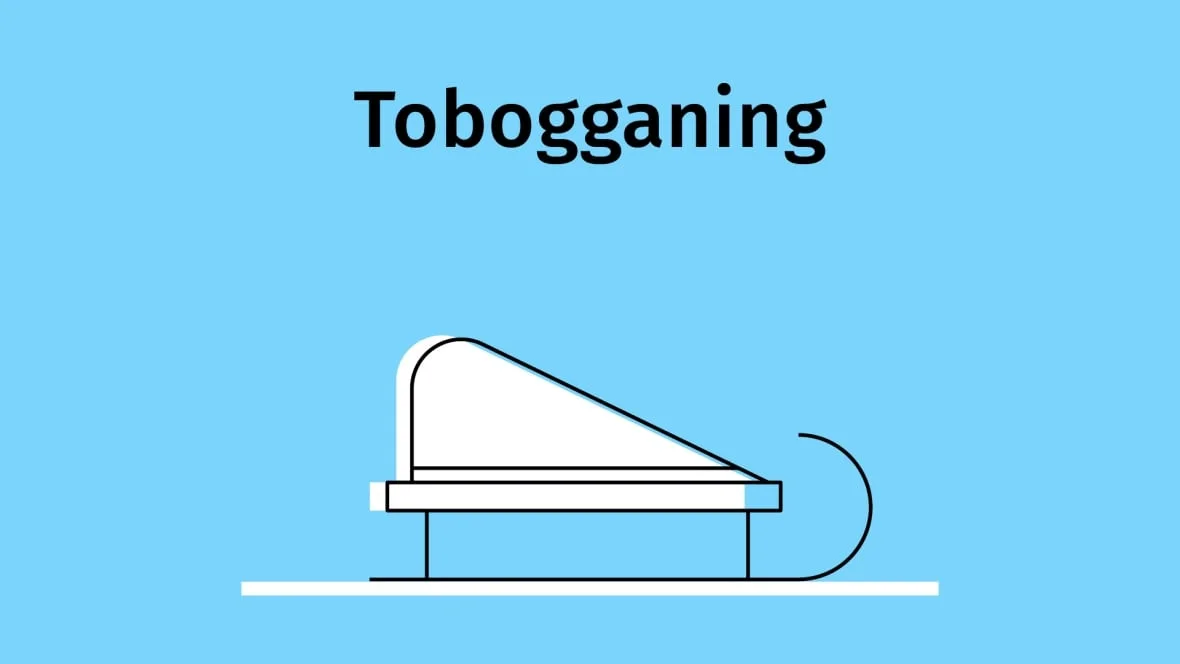
Tobagganing is a low-risk activity if people aren't sharing sleds and are simply going down the hill alongside others. (CBC Graphics)
"Parents and kids, I think they'd be happy to know tobogganing certainly is a low risk activity, particularly if you are doing that with your household," Huang said.
"Even if you were to do it with a few regular contacts outside of your household, by virtue of it being outdoors, it's really low risk."
Huang said that by "low risk," she means that if someone is infected and doesn't know it there is a lower risk of it spreading to others. She said to keep the risk low, though, people should not share a tobaggan with anyone outside their household.
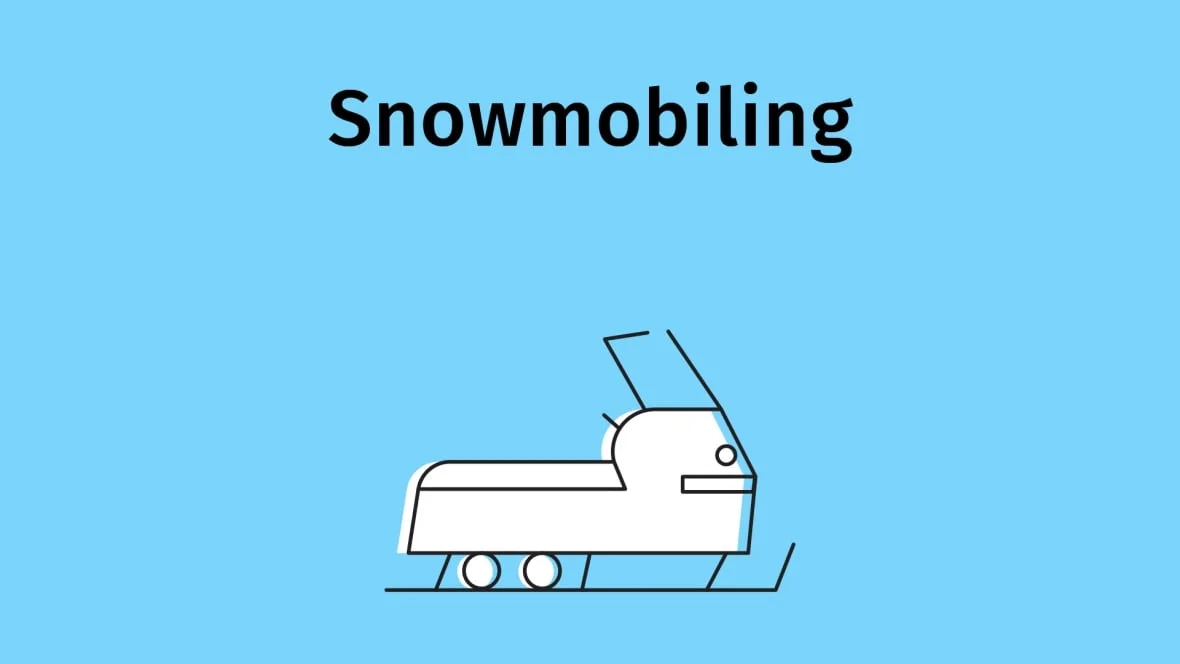
Dr. Anne Huang said snowmobiling is a low risk activity, but only people from the same household should share a sled. (CBC Graphics)
Snowmobiling is also a low risk activity if only people from the same household share one sled, Huang said. With everyone on their own snowmobile, there's a small chance of an infected person spreading it to others.
"In general, you're outdoors and there's lots of fresh air to dilute any virus," she said.
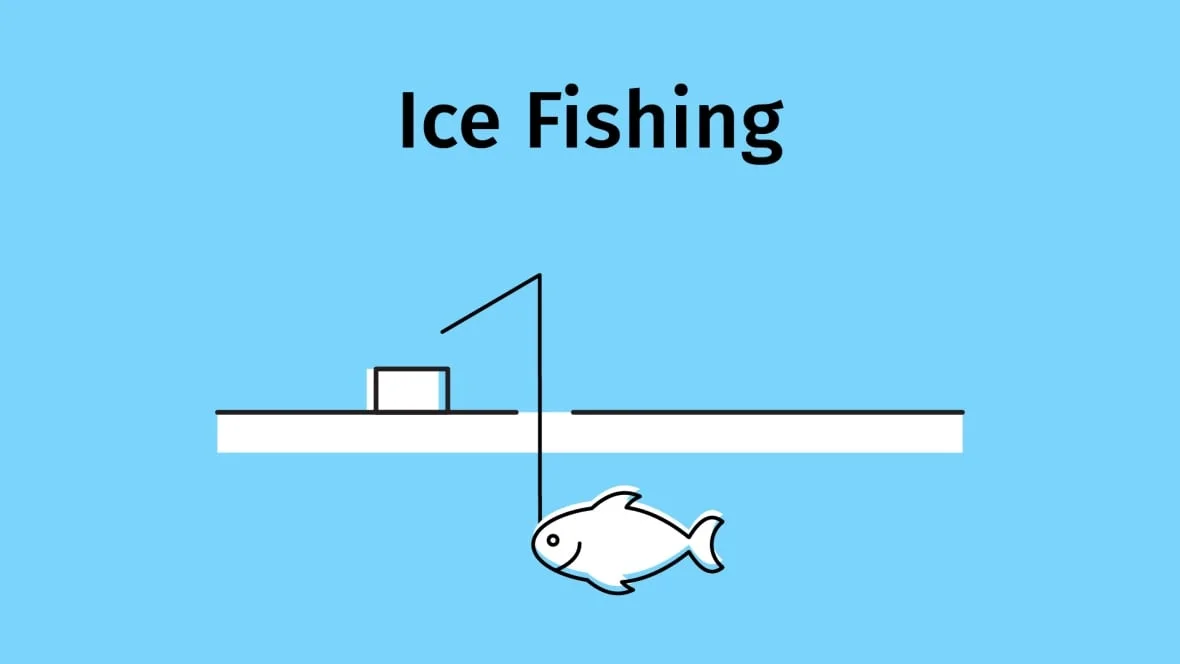
Dr. Anne Huang said ice fishing with friends is considered low risk as it's typically outdoors. However, the risk gets a bit higher if people are close together. (CBC Graphics)
Ice fishing with friends is considered low risk as it's typically outdoors. However, the risk goes a bit higher if people are close together.
Huang suggests spreading out about one metre and not gathering in warming huts. She also suggests sitting side-by-side people so no one is talking face-to-face.
"Try not to yell, because when you're yelling, if you're infected and infectious, you're potentially releasing more droplets," she said. "If you have at least a metre of distance away, that is actually quite far outdoors."
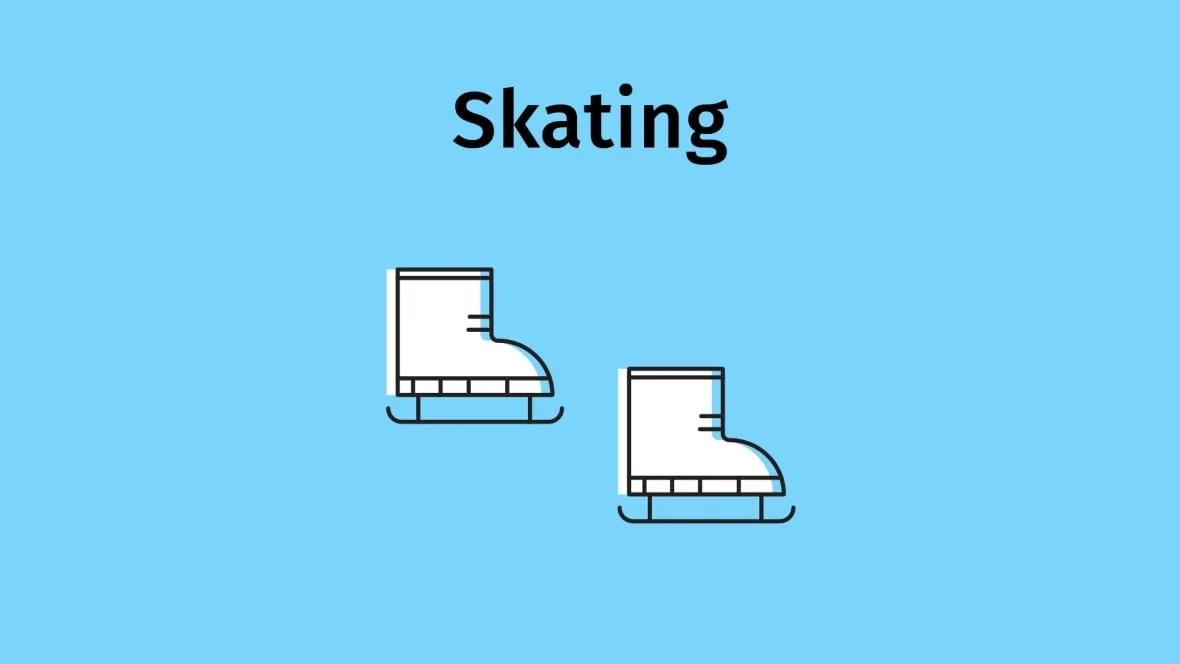
Dr. Anne Huang said skating is low-risk but it's important to keep your distance from others while participating. (CBC Graphics)
Huang said outdoor skating is low risk as long as people physically distance from other skaters.
She cautioned that people will want to avoid closed spaces, like the warming shacks that are frequently set up at some skating rinks.
"If you need to be in there, keep your distance, keep your mask on," she said. "The more people there are, the more the probability of someone carrying the virus increases."

Dr. Anne Huang said that to keep an outdoor pick up hockey game low risk, people should avoid contact-heavy games and keep their distance from others as much as possible. (CBC Graphics)
An outdoor pickup hockey game is relatively low risk, Huang said, but there are some things to keep in mind.
She said because people are breathing heavier, so if they are infectious they could be spreading the virus. To keep it low risk, people should avoid contact-heavy games and instead keep their distance from others even while playing.
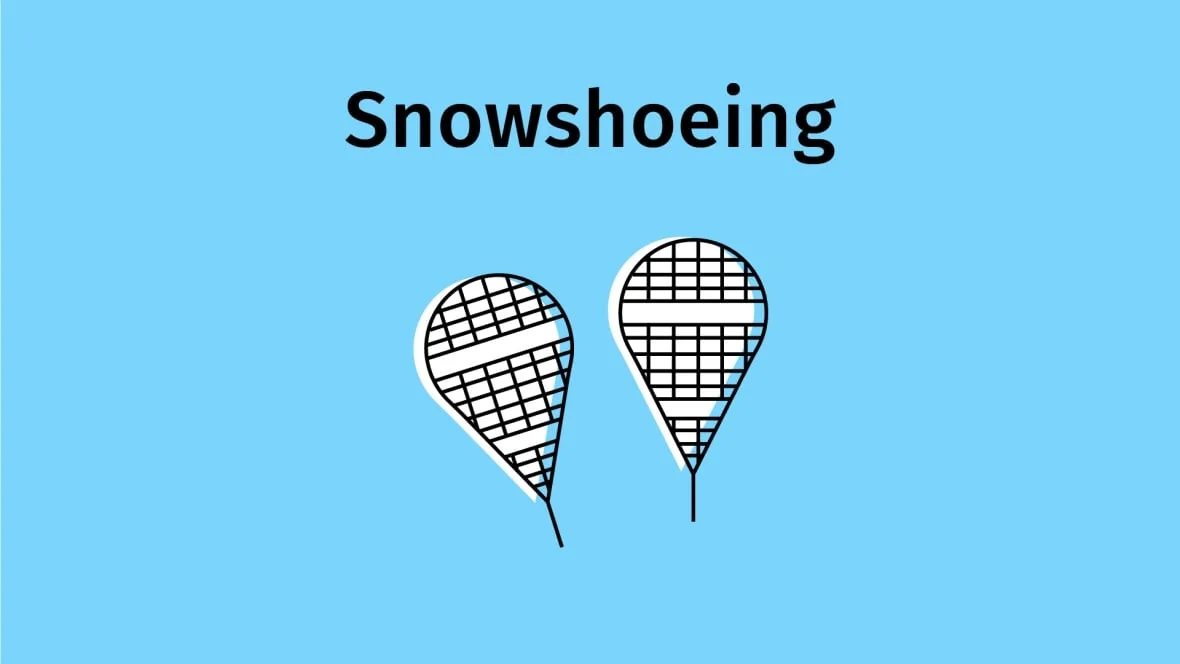
Dr. Anne Huang said snowshoeing is a low risk activity, but people should avoid stopping and speaking face-to-face. (CBC Graphics)
Walking outdoors, hiking or snowshoeing are all considered low risk, Huang said. However, people should avoid stopping and speaking face-to-face.
"You can reduce that risk by making sure you are as far as you can be while speaking comfortably," Huang said. "And angle yourself a little bit so you're not sort of directly breathing in what the other person is expelling."
Masks make a difference in lowering the risk as well, she said.
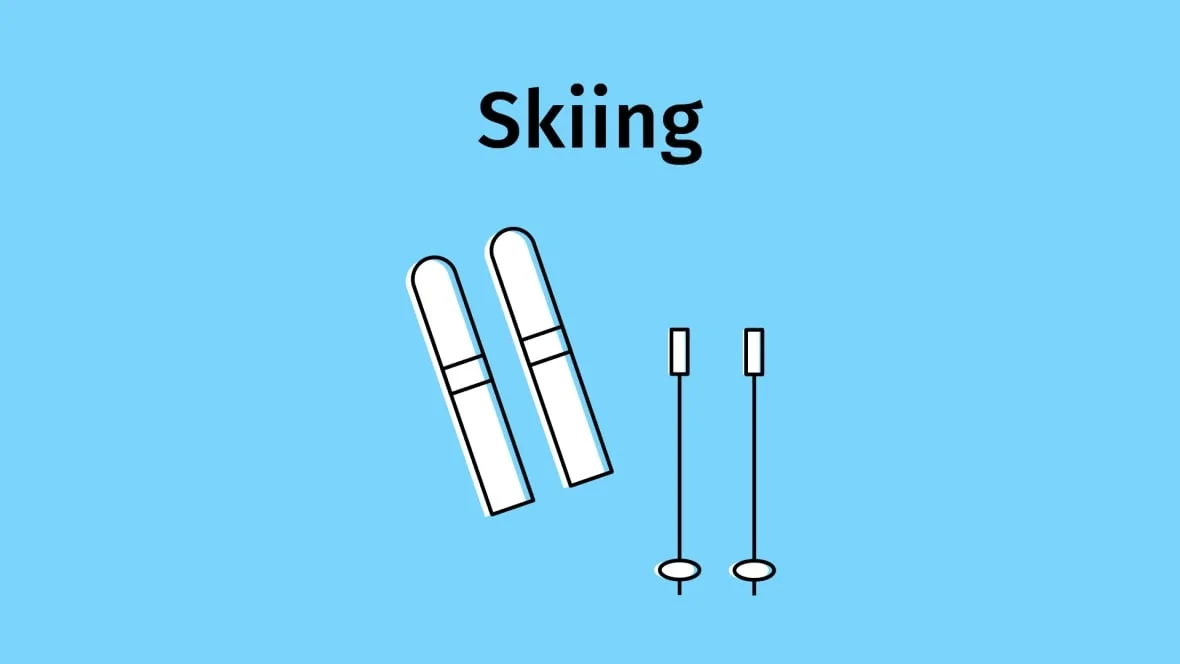
Dr. Anne Huang said the act of skiing itself is low risk, but there are some caveats. (CBC Graphics)
The act of skiing itself is low risk, Huang said, but there are some caveats. With downhill skiing, enclosed warming places or enclosed ski lifts can push the risk up higher.
With cross-country skiing, Huang warns people are breathing heavier and may end up using cabins or public bathrooms, pushing up the risk.
"Avoid those sheds if you can, and then maybe pick a place where you could go and come back without having to use public facilities," she said.
MEDIUM RISK ACTIVITIES

Dr. Anne Huang said the risk associated with renting a cabin depends on the type of cabin and the ventilation it has. (CBC Graphics)
Huang said the risk of going to a cabin a cabin depends on the type of cabin and ventilation it has. Renting a small cabin can be riskier than if people were to simply stay home, she said.
"If you have someone who's even within the same household but having an elevated risk of becoming exposed and infected, I would be very mindful when you go out to a small cabin, because that essentially creates an enclosed space that's poorly-ventilated in general."
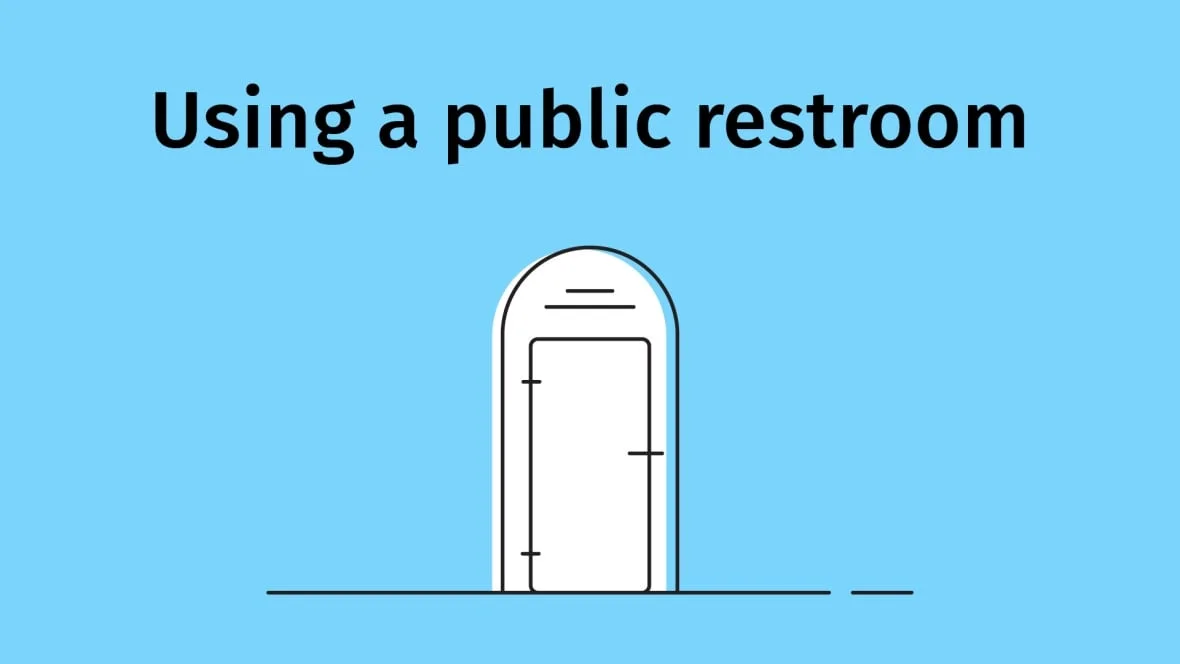
Dr. Anne Huang said the risk associated with public bathrooms depends on many factors. (CBC Graphics)
Huang said the risk associated with public bathrooms depends on many factors.
The more space in between people, the more chance the virus will die on surfaces or in the air, as it doesn't live well outside the human body, she said.
"If they have crowd control, exhaust then turn on and, of course, good cleaning, and if if that sort of crowd isn't there, that means there's a bit more time in between uses," she said.
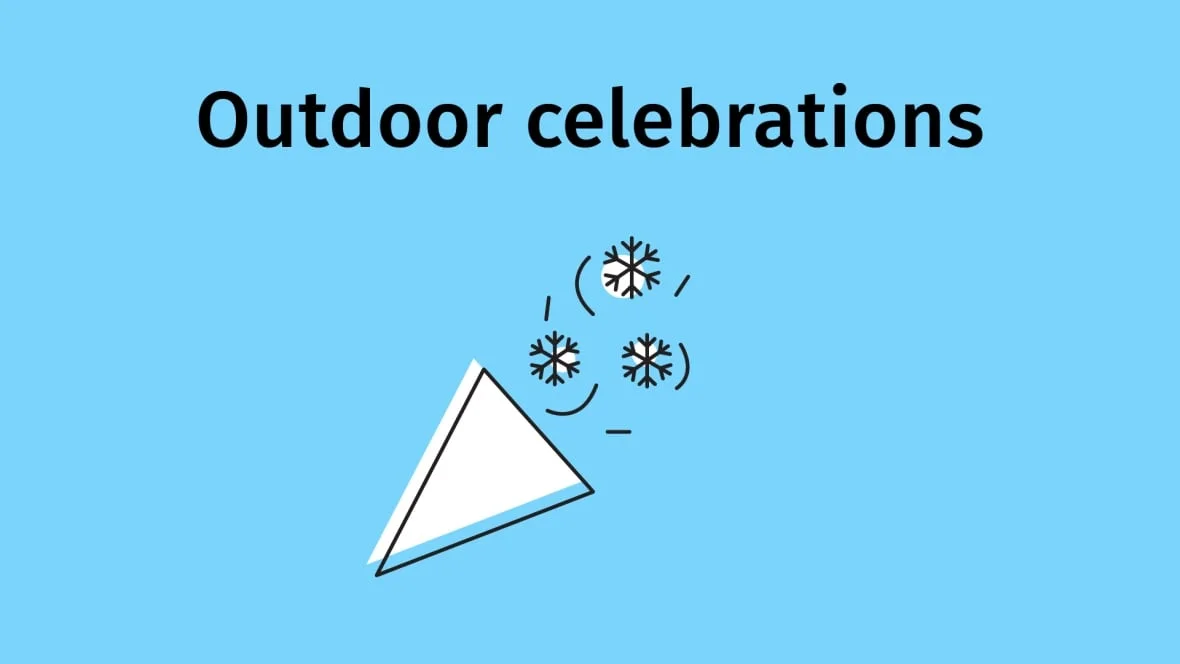
Dr. Anne Huang said it's important people practice physical distancing, wear masks and be mindful of enclosed spaces when having an outdoor celebration. (CBC Graphics)
If people gather to celebrate something outdoors, there is risk involved, Huang said. It's important people practise physical distancing, wear masks and be mindful of indoor spaces.
"Oftentimes, even if it's outdoors, you end up going into a public bathroom indoors or a private house bathroom," she said. "You end up sharing these indoor utility spaces … you can end up inadvertently coming to high risk situations or enclosed spaces."
When organizing an outdoor celebration within the provincial restrictions, organizers should remind people to mask up when indoors and spend as little time indoors as possible, she said.
HIGH-RISK ACTIVITIES
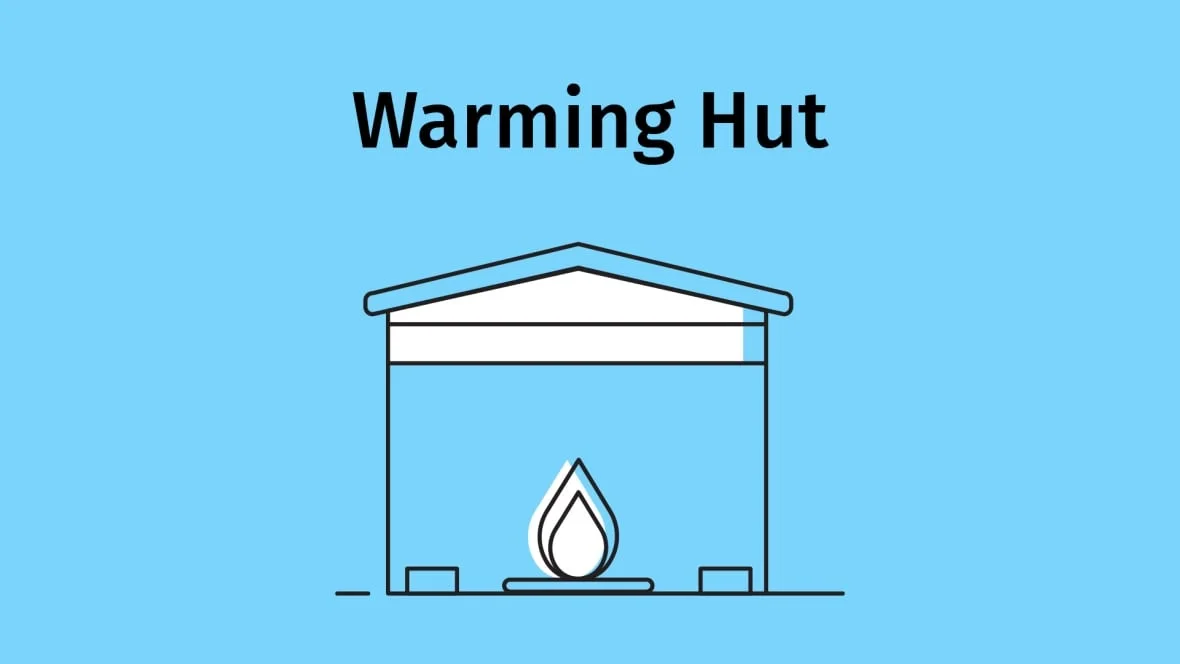
Dr. Anne Huang said warming enclosures can become dangerous because they are keeping warm air in and have people breathing the same space. (CBC Graphics)
Huang said warming huts or shacks can become dangerous because they are keeping warm air in and have people breathing in the same space.
"That's where the seemingly low risk activity can give you a problem, because we go out, we think we're just getting outdoors, and then we're like, 'Oh, let's chat.' That's inside," she said.
"Be careful, be mindful of it."
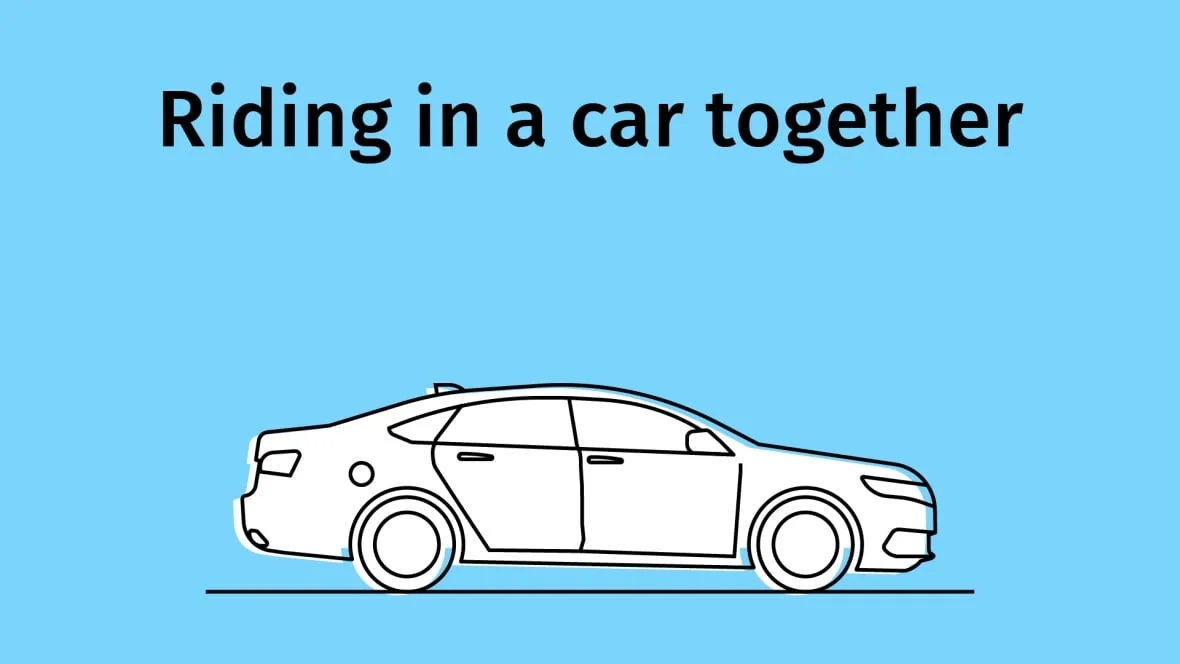
Dr. Anne Huang said sharing a vehicle in the winter is riskier than in the summer, as it is less likely people will circulate air by rolling down the windows. (CBC Graphics)
Sharing a vehicle in winter is higher risk than in the summer, Huang said. In the winter, people may not want to roll down the windows, so the air may be recirculating and filtration is not the best.
"I want to avoid it if I can," Huang said.

Dr. Anne Huang said to avoid indoor celebrations as they represent a high-risk environment for COVID-19 transmission. (CBC Graphics)
Even with capacity limitations, gathering indoors is a high risk situation, Huang said.
"It's worth reminding people that what you want to avoid is number one, close contact, and number two, you want to avoid crowds. Number three, close space," Huang said.
At indoor celebrations, all three of these things can occur.
Also in the high risk category are indoor sports such as curling, hockey and indoor skating, where outbreaks and transmission have occurred.
"It's the concept of doing that actually may involve congregations and indoor space," she said. "When you engage in these activities, be mindful of the time you spend in these indoor congregate areas with people outside of your house."
FOCUS ON OUTDOOR, SAFE ACTIVITIES: HUANG
Huang said people should really focus on low risk, outdoor activities this winter.
"Maybe we're going to have a tiny bit of a silver lining in this is that maybe we're going to encourage more activities and a more active lifestyle spending time outdoors," she said.
Original story by Heidi Atter, published on CBC.ca, with files from Alex Soloduca.









